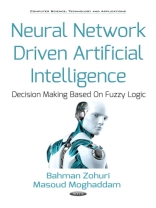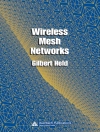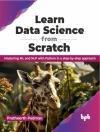Dr. Bahman Zohuri is currently at the Galaxy Advanced Engineering, Inc. a consulting company that he stared himself in 1991 when he left both semiconductor and defense industries after many years working as a chief scientist. After graduating from University of Illinois in field of Physics and Applied Mathematics, he joined Westinghouse Electric Corporation where he performed thermal hydraulic analysis and natural circulation for Inherent Shutdown Heat Removal System (ISHRS) in the core of a Liquid Metal Fast Breeder Reactor (LMFBR) as a secondary fully inherent shut system for secondary loop heat exchange. All these designs were, used for Nuclear Safety and Reliability Engineering for Self-Actuated Shutdown System. He designed the Mercury Heat Pipe and Electromagnetic Pumps for Large Pool Concepts of LMFBR for heat rejection purpose for this reactor around 1978 where he received a patent for it. He then was, transferred to defense division of Westinghouse later, where he was responsible for the dynamic analysis and method of launch and handling of MX missile out of canister. He later on was a consultant at Sandia National Laboratory after leaving United States Navy. Dr. Zohuri earned his Bachelor’s and Master’s degrees in Physics from the University of Illinois and his second Master degree in Mechanical Engineering as well as his Doctorate in Nuclear Engineering from University of New Mexico. He has been, awarded three patents, and has published 26 textbooks and numerous other journal publications. Recently he has been involved with Cloud Computation, Data warehousing, and Data Mining using Fuzzy and Boolean logic With today’s growing and overloading volume of information, it is becoming tremendously difficult to analyze the huge amounts of data that contain this information. It makes it very strenuous and inconvenient to introduce an appropriate methodology of decision-making fast enough to the point that it can be considered as real-time. The demand for real-time processing information and related data – both structured and unstructured – is on the rise and consequently makes it harder and harder to implement correct decision making at the enterprise level to keep the organization robust and resilient against either manmade threats or natural disasters.Neural networking and fuzzy systems combined show how an artificial intelligence (AI) can be driven, by these combinations as a trainable system that is more dynamic than static when it comes to machine and deep learning language to deal with both adversary and friendly events in real-time. Dynamic systems of AI that are built around such an innovative approach allows the robots of the future to be more adaptive with mechanisms such as principle adoption, self-organization, and the convergence of global stability from the viewpoint of business and intelligence security needed in today’s cyber world.To deal with uncertainty, vagueness, and imprecision, Lofti A. Zadeh introduced fuzzy sets and fuzzy logic. In the present book, fuzzy classification is applied to extend portfolio analysis, scoring methods, customer segmentation and performance measurement, and thus improves managerial decisions. As an integral part of the book, case studies show how fuzzy classification – with its query facilities – can extend customer equity, enable mass customization, and refine marketing campaigns This book shows interoperability between the two sciences/techniques show how: 1) To utilize fuzzy theory of the first and second kind to an adaptive control; and 2) how to invent a structured fuzzy system and robots of future, with unsupervised neural network techniques to face an unstructured world of big data and unpredictable global events all in real-time.An important aspect of this approach is to examine biological neural systems and study how artificial neural networks are, how they are based on them, and how they are driven by them as well. Key areas discussed include: 1) Structural diversity; 2) temporal lobe; 3) origins of artificial neural systems; 4) brain structure and function; 5) biological nerve cells; 6) synapses; 7) random and fixed positions in the brain’s neural networks; and 8) how biological systems really compare to computational neural networks.The book is designed to be appropriate for courses in engineering, computer science, mathematics, psychology and biology.Target Audience:Universities with their computer science department for their senior undergraduate and graduate students, Computer Hardware and Software companies that are building Artificial intelligent, Pattern Recognitions, Deep Machine Languages, Autonomous and Business Resilience Systems, Hospitals with their neurology department, government with homeland security and intelligent communities as well etc
Masoud Moghaddam & Bahman Zohuri
Neural Network Driven Artificial Intelligence [PDF ebook]
Decision Making Based On Fuzzy Logic
Neural Network Driven Artificial Intelligence [PDF ebook]
Decision Making Based On Fuzzy Logic
¡Compre este libro electrónico y obtenga 1 más GRATIS!
Formato PDF ● Páginas 379 ● ISBN 9781536121384 ● Editor Masoud Moghaddam & Bahman Zohuri ● Editorial Nova Science Publishers ● Publicado 2017 ● Descargable 3 veces ● Divisa EUR ● ID 7217185 ● Protección de copia Adobe DRM
Requiere lector de ebook con capacidad DRM












